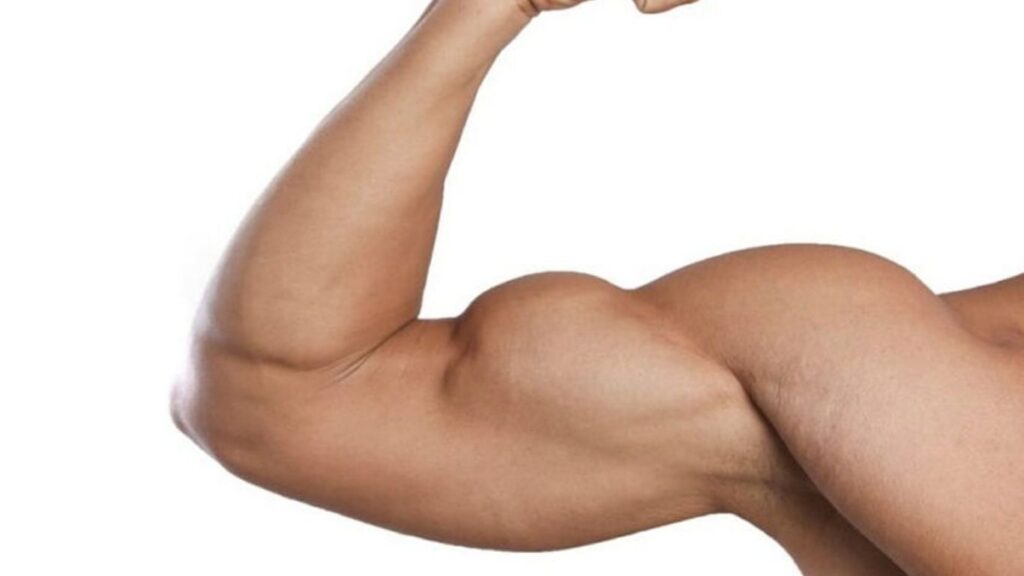Balanced arm development is crucial not only for aesthetic symmetry but also for functional strength and injury prevention. When both the biceps and triceps are equally developed, it facilitates smoother movement and better support for daily activities as well as athletic performance. However, it’s a common observation in fitness circles that triceps often lag behind biceps in terms of size and strength. This discrepancy can lead to an imbalance that might affect the overall functionality and appearance of the arms. Addressing why this happens and how to correct it is essential for those looking to achieve well-rounded arm development. This blog aims to shed light on these issues, helping enthusiasts understand and overcome the challenges in triceps training.
Why Triceps Often Lag Behind Biceps in Development
Anatomical Differences
A comparative study of the size ratio between biceps and triceps muscles reveals intriguing insights into upper arm composition and development. Typically, the triceps should be slightly larger than the biceps because it is composed of three heads (long, medial, and lateral) compared to the two heads of the biceps (long and short). Ideal muscle development often aims for a triceps to biceps size ratio where the triceps are about 60-70% larger than the biceps. This ratio ensures not only aesthetic balance but also functional superiority, as the triceps are crucial for the majority of arm extension movements. Achieving this ratio can be challenging due to the biceps being more prominently trained and visible, which often leads to a disproportionate focus on biceps exercises. Understanding and implementing balanced arm training can help in correcting this disparity, leading to better symmetry and functionality of the arm muscles.
Common Training Mistakes
Improper exercise selection can significantly impact muscle development, often unintentionally favoring the biceps over the triceps. For instance, many popular arm exercises, like curls and pull-ups, primarily target the biceps, giving them more stimulation and potential for growth compared to the triceps. This imbalance can be exacerbated by the allure of these exercises, which are frequently highlighted in fitness routines for their effectiveness in building the more visually prominent biceps.

Additionally, the effectiveness of triceps exercises can be severely diminished by poor technique and form. Triceps extensions, skull crushers, and dips, when performed incorrectly, not only reduce the efficacy of the workout but also increase the risk of injury. Common mistakes include using too much weight, leading to compromised form, and inadequate elbow positioning, which fails to isolate the triceps adequately.
The disparities in training frequency and intensity between these muscles further contribute to uneven development. Triceps often require higher volume and frequency due to their ability to endure more stress and their role in various compound movements. Neglecting these aspects can lead to underdeveloped triceps compared to biceps, affecting overall arm strength and aesthetics. Balancing the workout regimen to address these factors is crucial for achieving symmetrical and effective arm development.
Psychological and Cultural Influences
The emphasis on biceps over triceps in strength training can be largely attributed to psychological and cultural factors. Biceps, often more visible and iconic, are frequently associated with symbols of strength and masculinity in popular media. This visibility leads many to prioritize biceps workouts to achieve what’s culturally celebrated as a sign of physical prowess. Conversely, the triceps, though they make up a larger portion of the arm’s mass, are often underestimated in their role in arm aesthetics and functional strength. This oversight can result in imbalanced development, affecting not just appearance but also the functionality of the arms, highlighting the need for a more holistic approach to arm training.

Corrective Measures and Tips
To balance biceps and triceps development, it’s crucial to structure your workouts to address both muscle groups effectively. Begin by incorporating an equal number of exercises for each muscle group in your routine. For the biceps, classic exercises like curls and hammer curls are excellent, while the triceps benefit greatly from skull crushers and tricep dips. Always aim for a range of 3-4 exercises for each muscle group, with 3-4 sets of 8-12 repetitions.
Improving form and technique is essential, particularly for triceps development. For exercises like the tricep extension, ensure that your elbows are close to your body and only the forearms move. This isolation helps target the triceps more effectively. Additionally, avoid using excessive weight, which often leads to compromised form and reduced muscle engagement.
To emphasize triceps growth and balance arm development, consider incorporating triceps-focused workout days into your routine. Start with compound movements like close-grip bench presses to engage multiple muscle fibers, followed by isolation exercises such as overhead triceps extensions and kickbacks. By prioritizing triceps training, you can correct imbalances and achieve a more symmetrical upper-arm development.

Conclusion
The disparity in development between biceps and triceps can often be attributed to anatomical differences, common training oversights, and cultural influences that favor biceps visibility. By understanding these factors and adjusting your training regimen accordingly, you can achieve more balanced arm development. Focusing on proper exercise selection, technique, and a well-rounded workout routine that prioritizes both muscle groups equally will lead to stronger, more aesthetically pleasing arms. Remember, consistency and attention to detail in your training approach are key to overcoming natural imbalances and enhancing overall muscle growth.
Also read: Is Muscle Failure Important for Muscle Growth? A Deep Analysis
